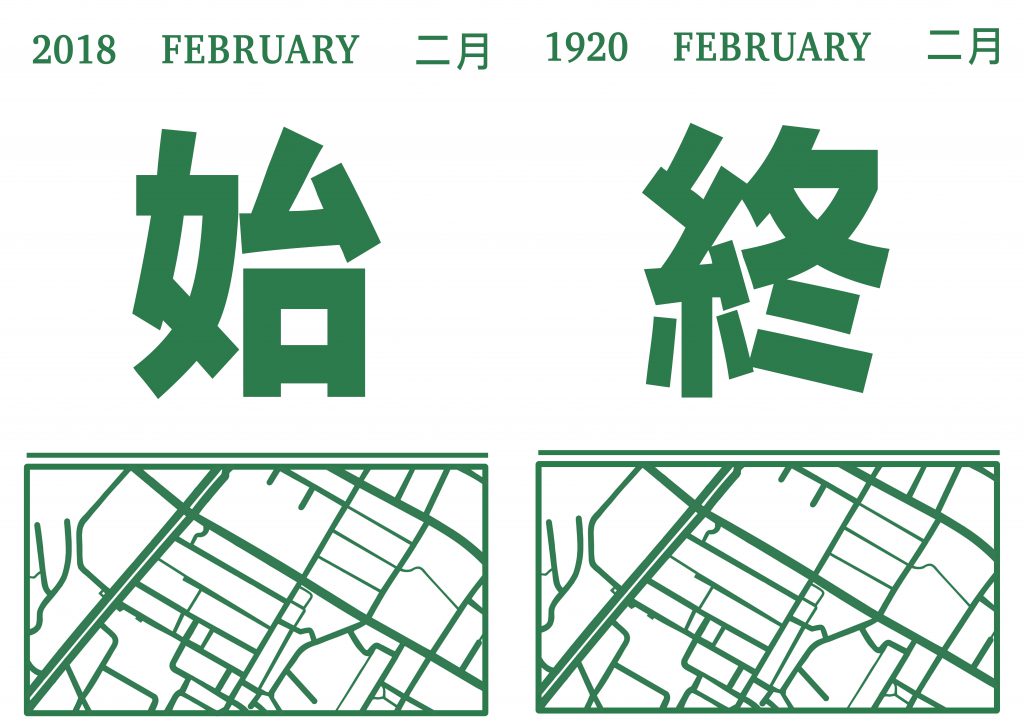
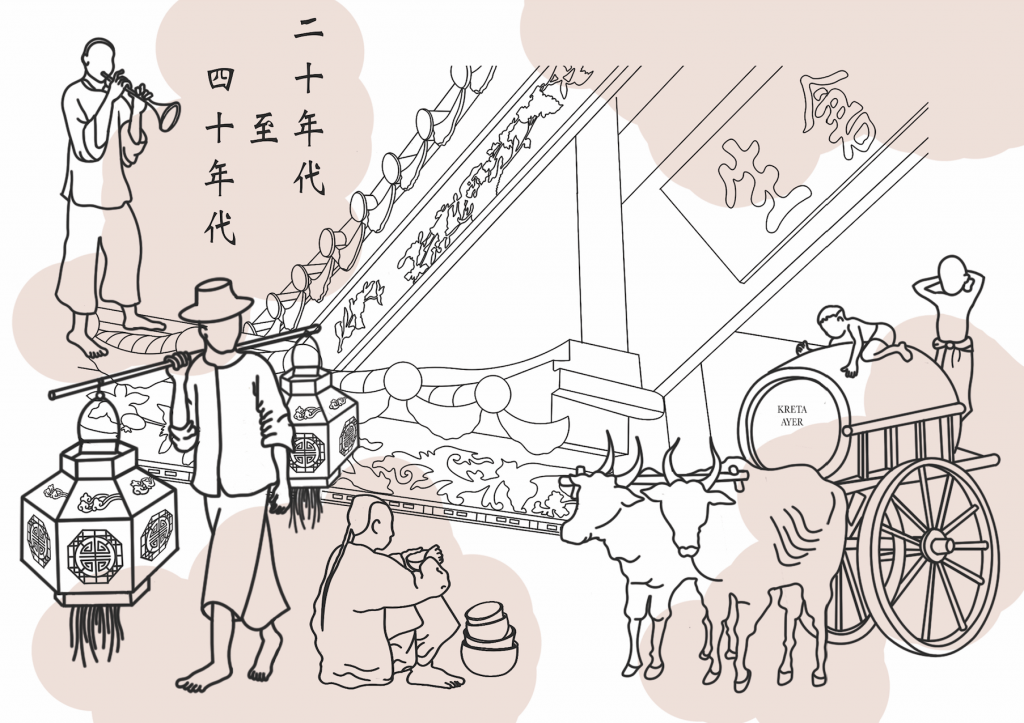

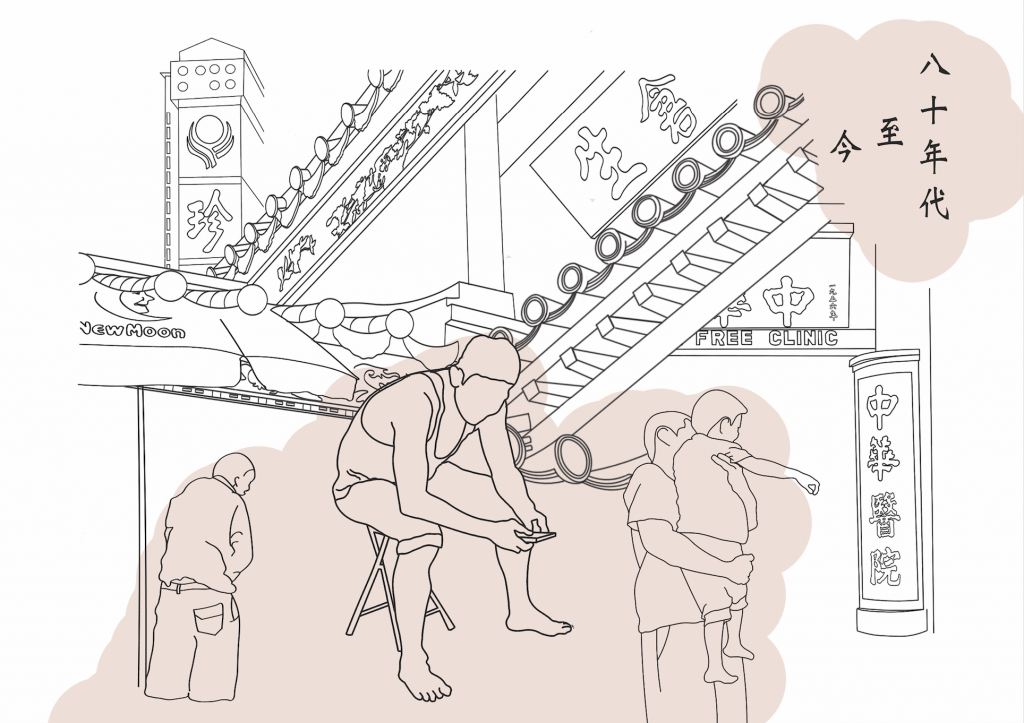
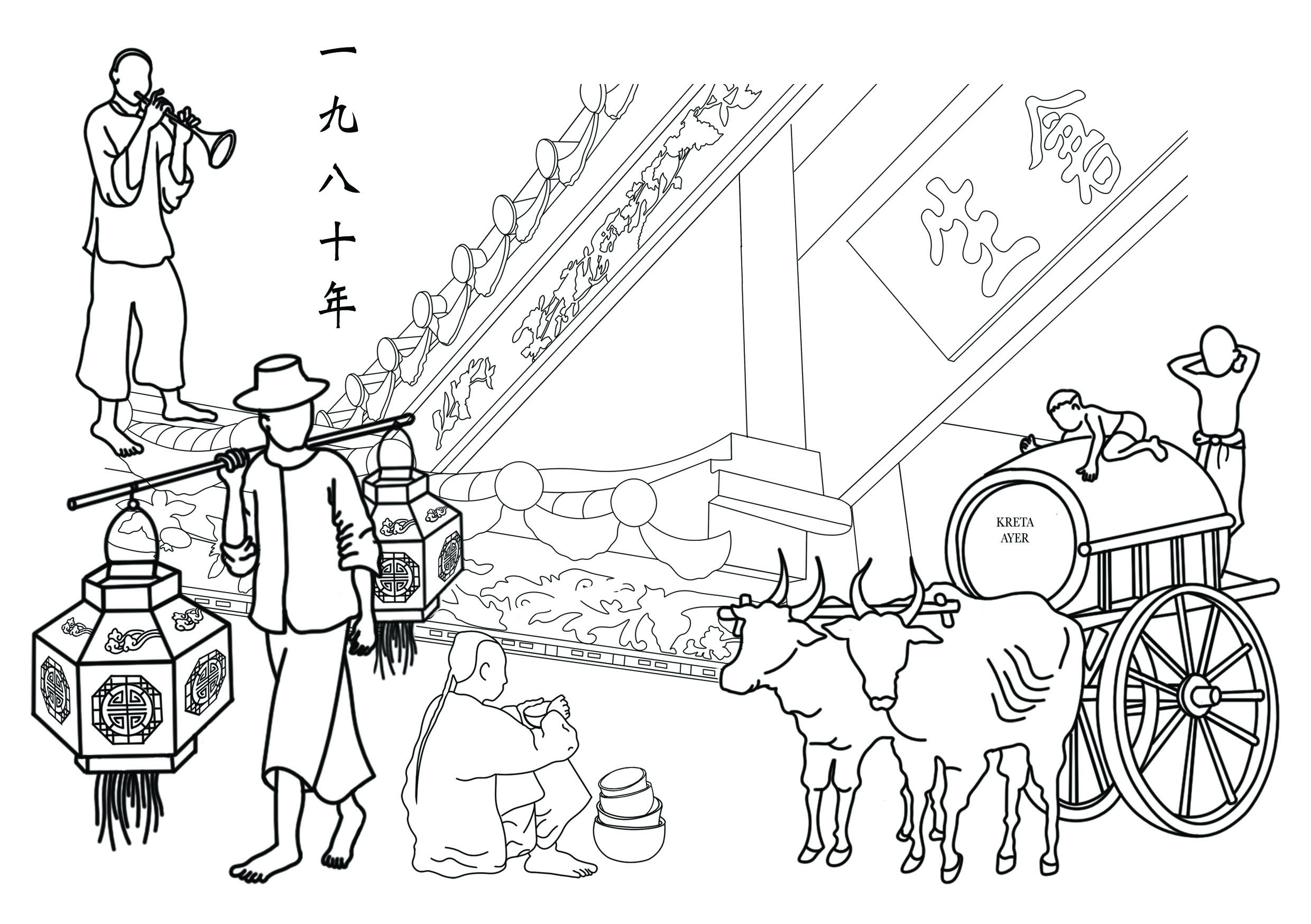
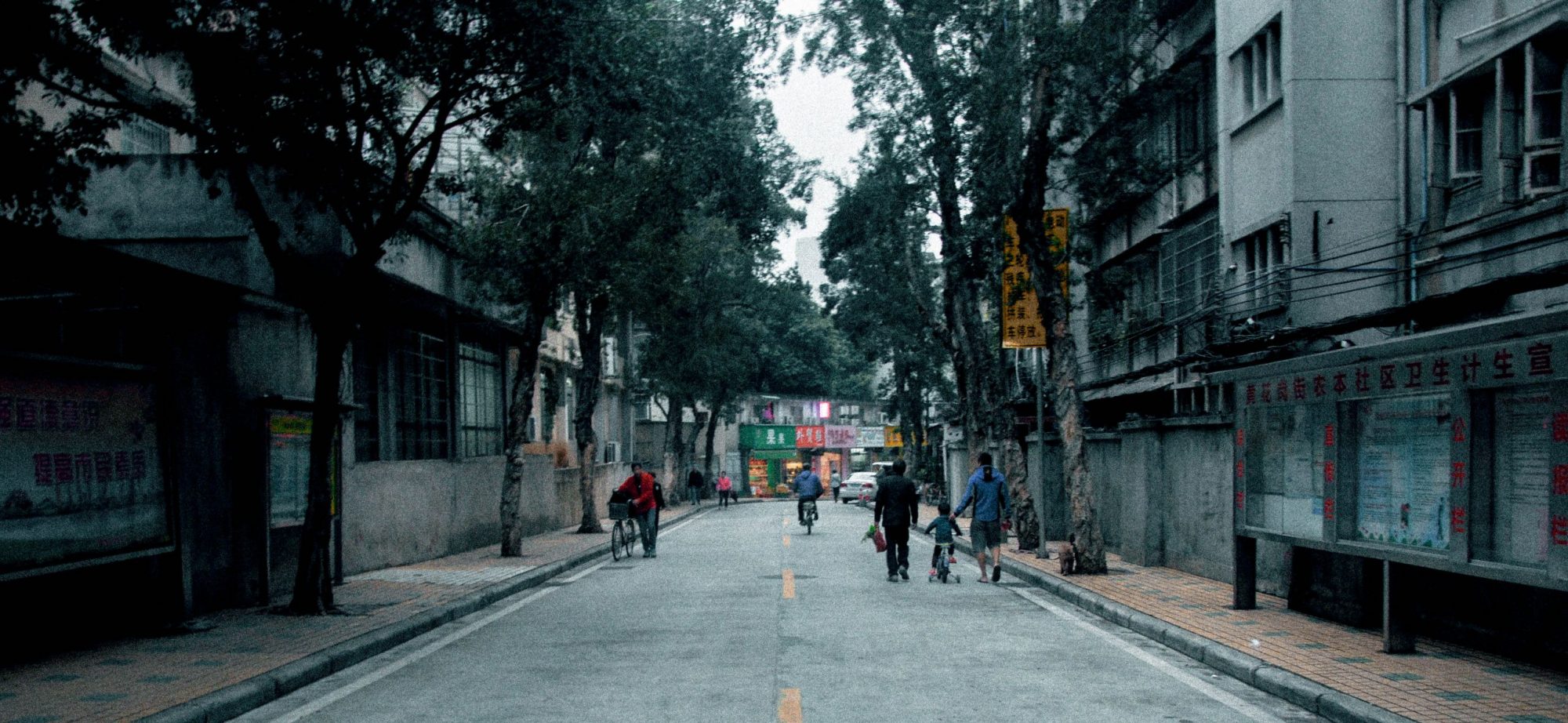






This is my final design for my Zine.
Page 1 & 8
I decided to design the cover page with reference to the traditional Chinese calendar, as it was a subtle message to indicate that it is related to the overarching theme of time. Since it was a 2 way zine, it does not matter which way the reader starts off from. 
終, zhong – end
始, shi – start
The usage of using Chinese words is to represent the saying of the end is the start of something new. In the box, I drew out the map of Telok Ayer. I decided not to include the location in because it would be a little tacky, hence I included the map.
Page 2 & 3 (1920s – 1940s)
 Thian Hock Keng Temple:
Thian Hock Keng Temple:
One of Singapore’s oldest temple. Though it was not built during the 1920s (but earlier), the idea of new immigrants coming in to Singapore, and using the temple as a place of worship, gave it life, creating its mark during the era.
Bull cart:
Chinatown is known as “gu chia zui“, in hokkien. “gu” – bull, “chia” – car/cart, “zui” – water. Hence, I felt that it was significant to draw the bull cart, to show how Chinatown got its name.
Immigrants:
I wanted to show the jobs that the immigrants were doing, hence the variation of jobs, from carrying the lantern, to selling food by the road side (man sitting down).
Red:
The usage of red connotes the meaning of blood, and blood represents life. Hence, the red patches represents the new life that settled in Singapore. In addition, I made it a point to highlight the time stamp in red, to represent how the time and era is significant.
page 4 & 5 (1950s -1970s)

Chung Hwa Free Clinic:
It started in 1956, after WW2 ended. It was a significant building as it was the headquarters and main clinic of SCPA. The clinic provided TCM to the citizens, and helped the needy and poor, serving the community, making it a better place.
People’s Park Complex:
It was the first of such shopping complex in the whole of Southeast Asia during the 1970s, and hence making it significant in the history of Singapore. Furthermore, its iconic building and colour makes it difficult for people to forget.
People:
There are 3 distinct group of people in the drawing itself.
Man holding buckets(right): Indicates the mode of transport back then, and how it is common to be walking around barefooted.
A group of men talkings (centre): The idea of interracial forming, which makes up Singapore’s today multi-racial culture
Man on trishaw (left): This shows the evolution of transport, from foot to trishaw.
Red:
The red patches in this case represents the life loss during WW2, and the start of a new country where Japanese have withdrawn from Singapore. The placement of the red patch in the centre, mimics the Japanese flag, indicated the previous invasion by the Japanese.
Page 6 & 7 (1980s – today)
Background:
I fused both old and new together, as Chinatown is a representation of co-existence of old and new. I combined the Thian Hock Keng Temple, with the new Buddha Tooth Relic Temple as one. In addition, I included Chung Hwa Free Clinic and People’s Park Complex, as they are still buildings that exist today. However, the usage of it did change. Chung Hwa Free Clinic is now a hipster cafe, whereas People’s Park Complex is a place that consist of many travel agency, with a cool carpark where youth goes to take pictures.
People:
It consist of 3 different generation, starting from the left.
Left: The New Moon Umbrella reminds me of the uncles that sit under it, hence it represents the oldest generation.
Centre: Middle age man that is glued to his device, showing the transition from nothing to electronic device.
Right: A father with a child. The idea of it is to show the passing of generation, and how people from our grandparents generation have since passed on Chinatown to us, for us to preserve it.
Red:
This time round, the red represents the new life, which is us, the new generation.
Reflection:
The process of developing this zine was not easy, and I encountered many problems along the way before churning out this final product. However, despite the errors along the way, it was a fun journey, and also an assignment that forces me to get out of my comfort zone. I explored into this whole new drawing style that I never thought would work out for me. The challenge of exploring a new place, to be away from where I was comfortable in was indeed tough but also a fruitful one.
Hence, this concludes my zine, and also my final submission for Year 1.
Signing out!
xx
Thanks Mimi for your guidance this whole academic year!

As mentioned in the previous post, I decided to change my idea once more, and settled for the overarching theme of Time – the end is always a start to new beginnings.
Before starting, I decided to plan my layout, to avoid making the same mistake as my previous idea, where I get stuck. I drew out the rough layout, to have my thoughts settled in place. 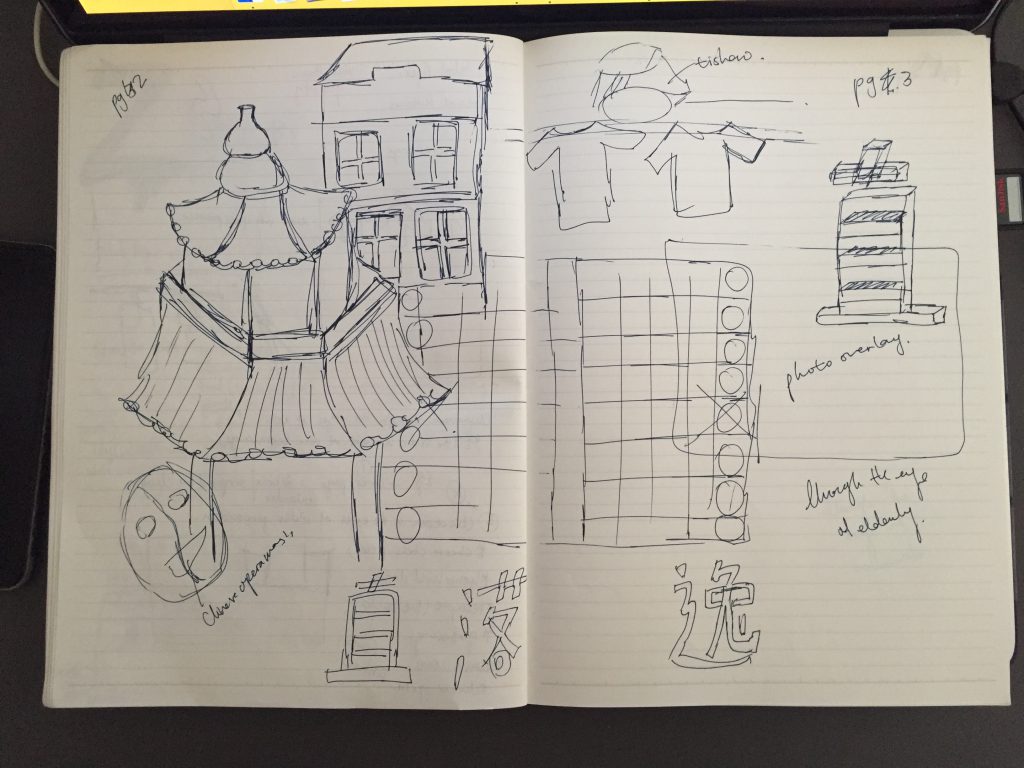
While planning, I decided that it would be interesting to tell my story with a 2 way zine, where one get to read it both ways, since it is in a chronological order. Therefore, with this idea, I went for consultation with Mimi once more to get the green light. Below was the sketch showed to Mimi, during the consultation.
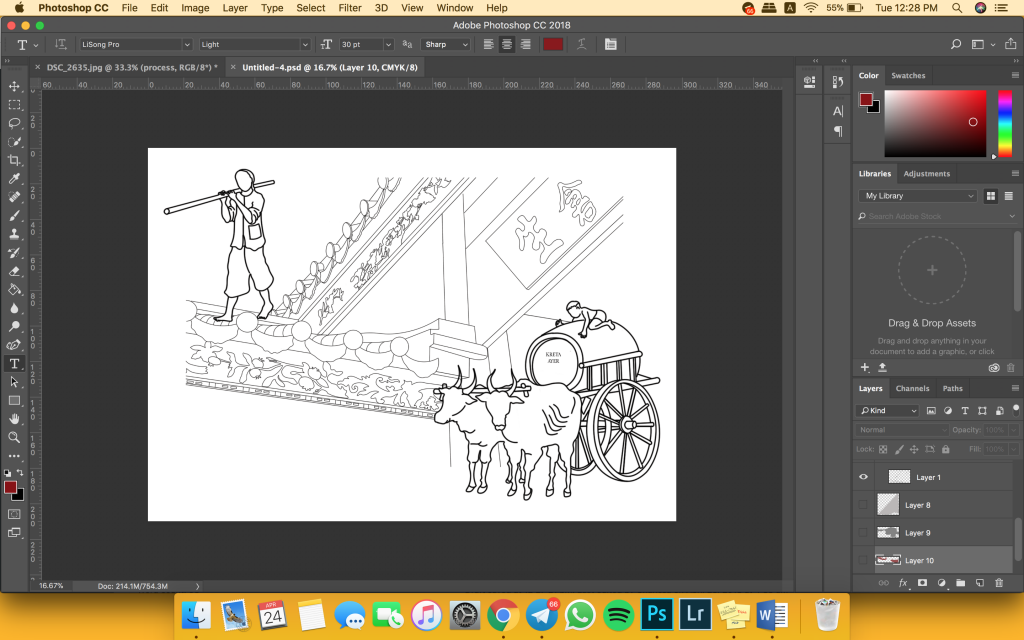 This sketch was drawn with reference to the murals that I came across at Telok Ayer. Everything drawn were the items or places that existed during 1920s – 1940s. I wanted to expand this page (2 & 3) alone till 1970s, and have page 4 & 5 to be of a digital image to show the passing of the older generation.
This sketch was drawn with reference to the murals that I came across at Telok Ayer. Everything drawn were the items or places that existed during 1920s – 1940s. I wanted to expand this page (2 & 3) alone till 1970s, and have page 4 & 5 to be of a digital image to show the passing of the older generation.
 cr: https://www.pinterest.com/pin/417357090461581464/
cr: https://www.pinterest.com/pin/417357090461581464/
I wanted page 5 & 6 to consist of traditional and modernity element, despite the usage of digital medium. I envision the image to be similar to the one above. However, after getting some feedbacks from my classmates and friends, they said that it did not translate the idea clearly. Mimi also said that it would be better if the zine was in a continuous chronological order, and not a sudden jump. Hence, I took the advice and decided to do it in a timeline order
Zine layout:
page 1 : cover
page 2 & 3: 1920s – 1940s
page 4 & 5: 1950s-1970s
page 6 & 7: 1980s – now
page 8: cover
I did some research on my zine layout and design too, and referenced mostly Chinese zines or product to learn how the idea of “chinese design” is being market, and used as packaging to identify itself.

cr: https://www.pinterest.com/pin/417357090461021829/
 cr: https://www.pinterest.com/pin/417357090461587571/
cr: https://www.pinterest.com/pin/417357090461587571/

cr: https://www.pinterest.com/pin/417357090461610440/
I came to realized that Chinese fonts are bold, with very little cursive. Colours are either extremely bright and striking, if not extremely down to earth tones. It is distinctive, and not loud.
As I have decided on using line drawings, as it would be completely different from my usual style of illustration, I referred to a few line drawing artists. 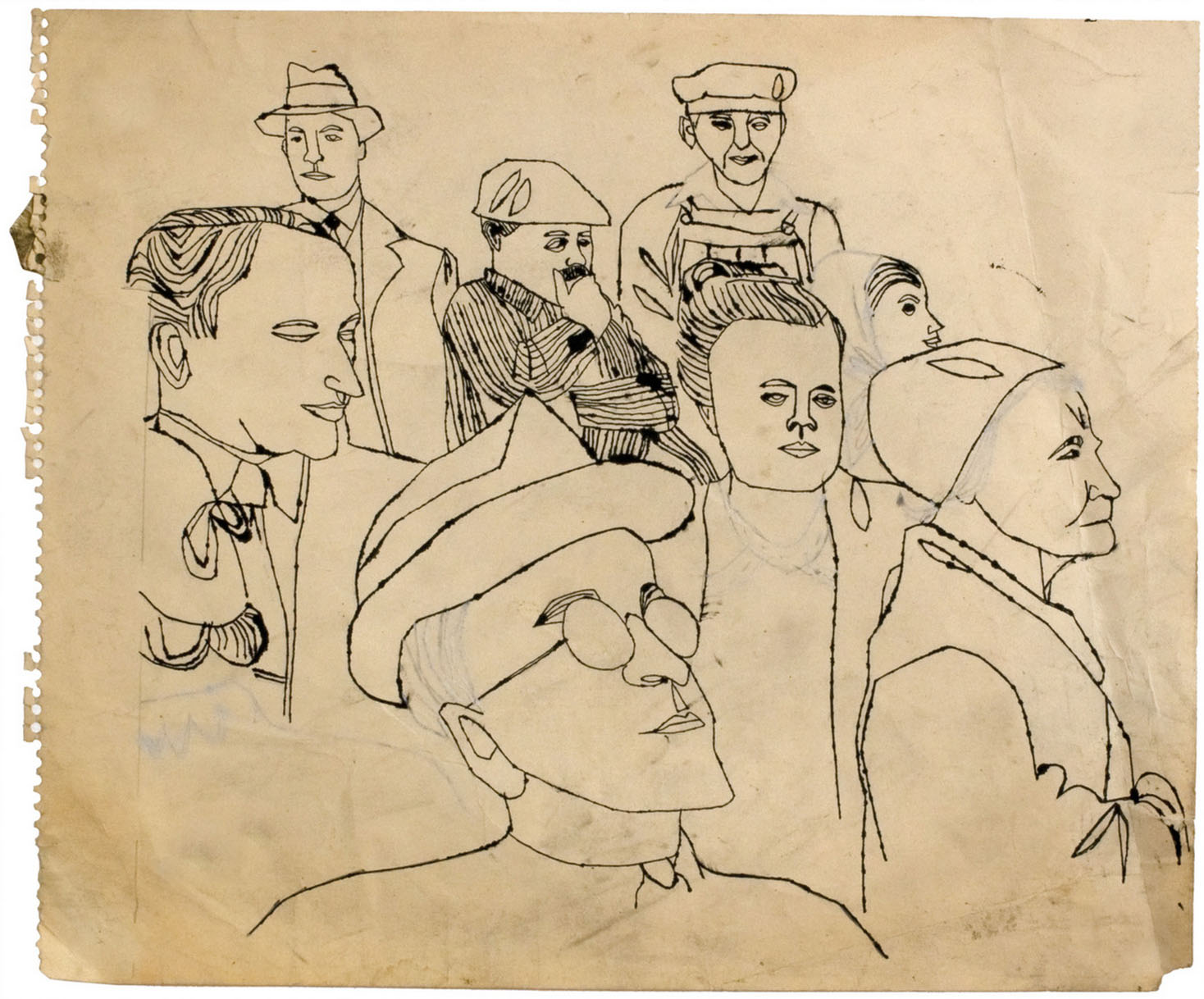 cr: https://www.huffingtonpost.com/2013/01/23/andy-warhol-early-drawings-louisiana-museum_n_2529261.html
cr: https://www.huffingtonpost.com/2013/01/23/andy-warhol-early-drawings-louisiana-museum_n_2529261.html


 cr: http://www.tate.org.uk/art/artworks/warhol-boy-with-flowers-ar00271
cr: http://www.tate.org.uk/art/artworks/warhol-boy-with-flowers-ar00271
 cr: https://www.pinterest.com/pin/551479916865796008/
cr: https://www.pinterest.com/pin/551479916865796008/



 cr: https://www.pinterest.com/pin/3307399702752371/
cr: https://www.pinterest.com/pin/3307399702752371/
I wanted to see how human figures were drawn, and I noticed it was the shape that gives definition to it, not so much on expression. Hence, I decided to leave out the facial expression of my human figures and focus more on the definition of body line.

This was after more details were added, and a re-arrangements were made, to create the zine page 2 & 3. 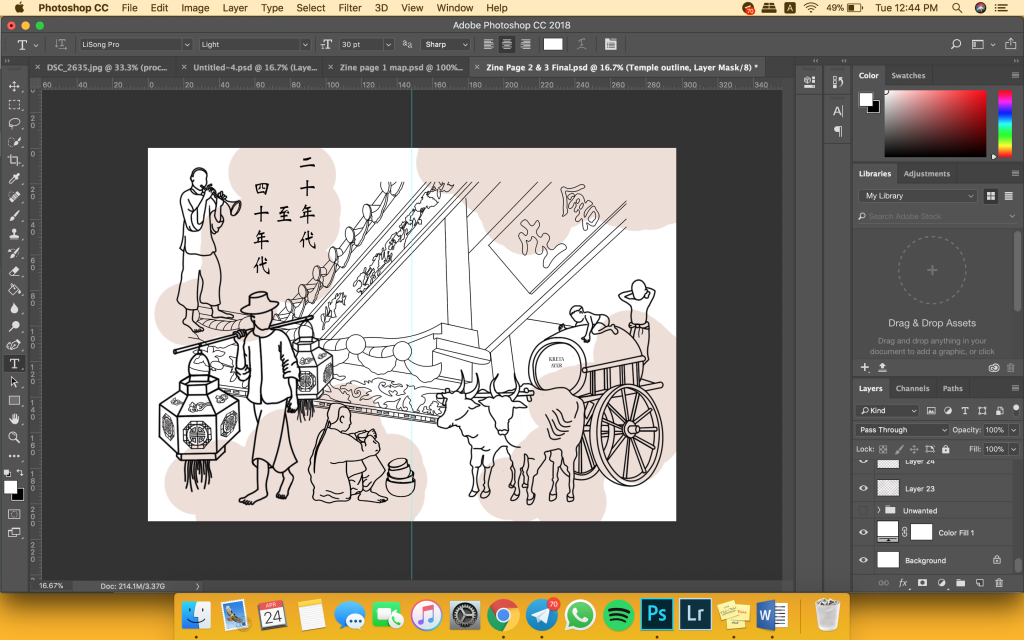 After settling on the design, I had to decide whether to add colours or not to the outline drawing. However, I felt that the lines itself created a background and foreground, and adding colours will be too much, but leaving it black and white will be too ugly. Hence, I added red patches to give it a little more life. This idea of using read its not only purposeful, but it helped to give some life and style to the zine.
After settling on the design, I had to decide whether to add colours or not to the outline drawing. However, I felt that the lines itself created a background and foreground, and adding colours will be too much, but leaving it black and white will be too ugly. Hence, I added red patches to give it a little more life. This idea of using read its not only purposeful, but it helped to give some life and style to the zine.
The whole explanation of the final zine can be read in the next post, where I share more about my final piece.

With reference to my research, I decided to create a zine that revolves around the idea of bringing social awareness. Hence, I started looking into brochures, magazine, news letter, websites, and pamphlets of social organizations. 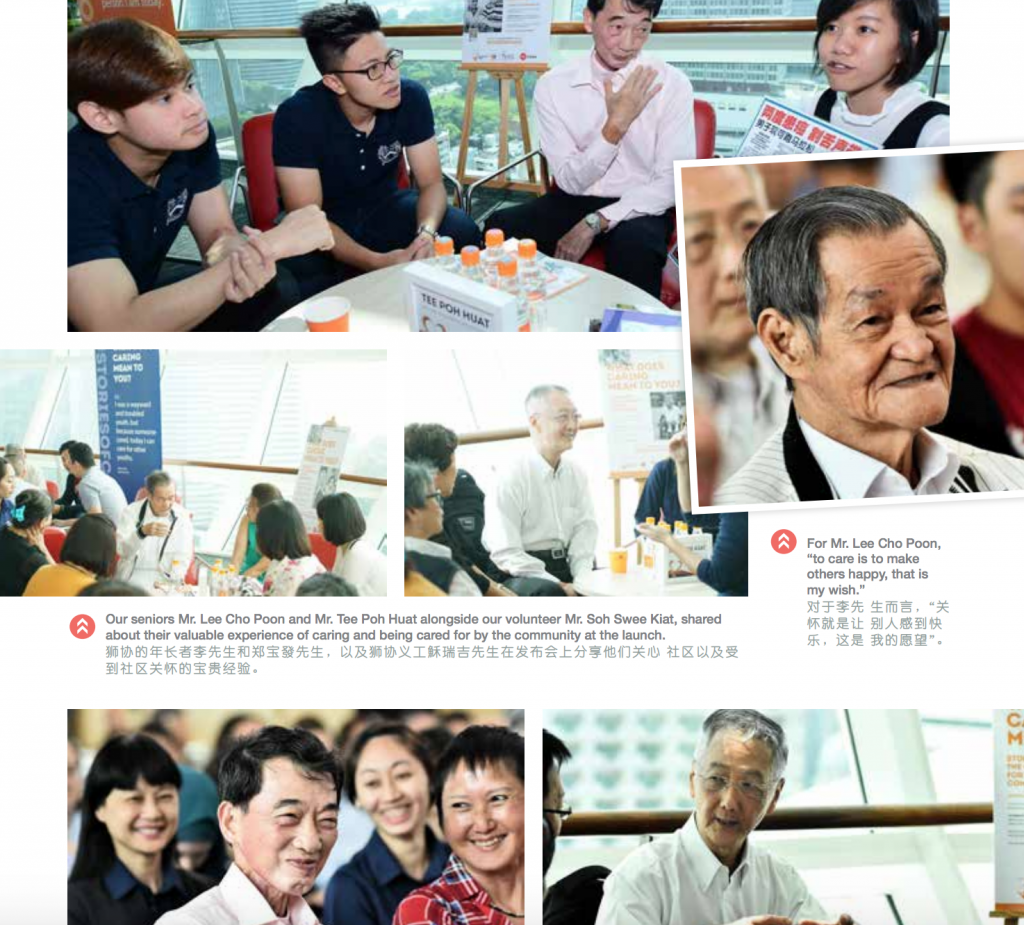
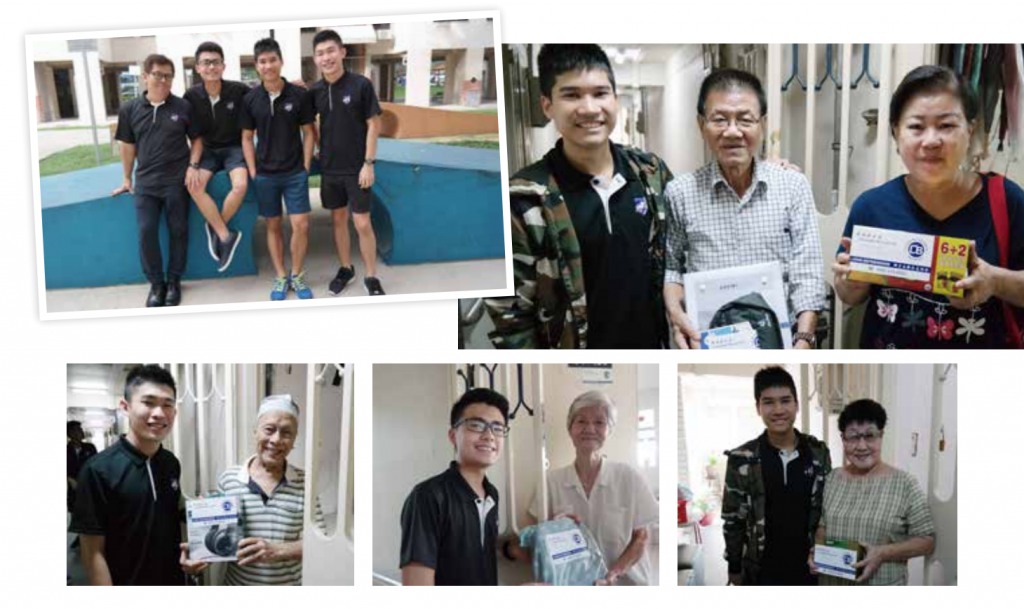 cr: https://www.touch.org.sg/get-involved/fundraising-campaigns/details/make-their-golden-years-better
cr: https://www.touch.org.sg/get-involved/fundraising-campaigns/details/make-their-golden-years-better
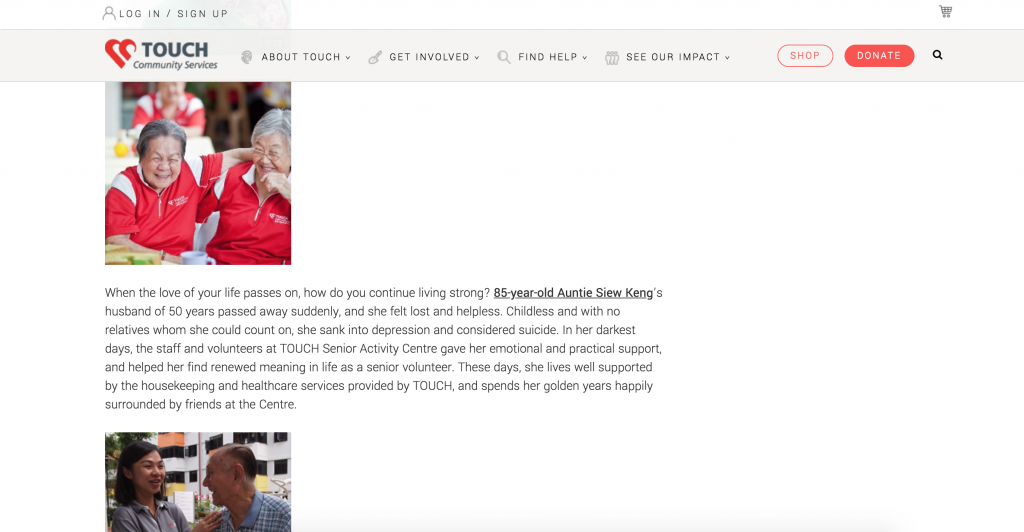
cr: https://www.touch.org.sg/get-involved/fundraising-campaigns/details/make-their-golden-years-better
I noticed that the elderly shots are always in portrait form, or interacting with volunteers. Hence, for my zine, I decided to follow a newsletter layout to design my zine.

I started by choosing the image I want, and decided to go with this uncle I met. This was the first time I tried realism digital illustration, and it was tough. I had to do multiple layers of shading in order for it to look less cartoon-like.
I proceeded on to draw out buildings that stands out in Chinatown, however, I came to realized that it did not fit well with my design layout. 
There were many empty spaces, and after showing Mimi during consultation, the place and idea was not well presented.
I struggled to come up with something abstract, and also found the difficulty in conveying a message through abstractness. Hence, I decided to change my topic once more, as I found myself being very restricted and bounded by this topic.
I decided to look for more information, and brainstormed for newer ideas. I came up with ideas that ties in with Chinatown, and think deeper than the mere superficial aspect of the place itself. 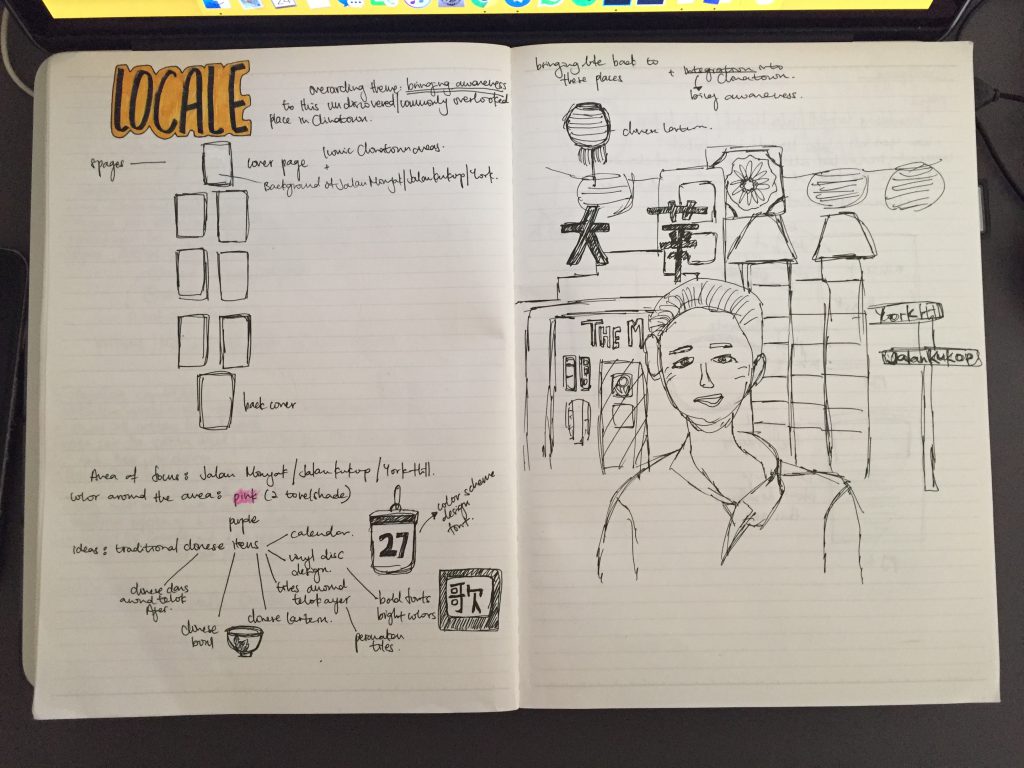
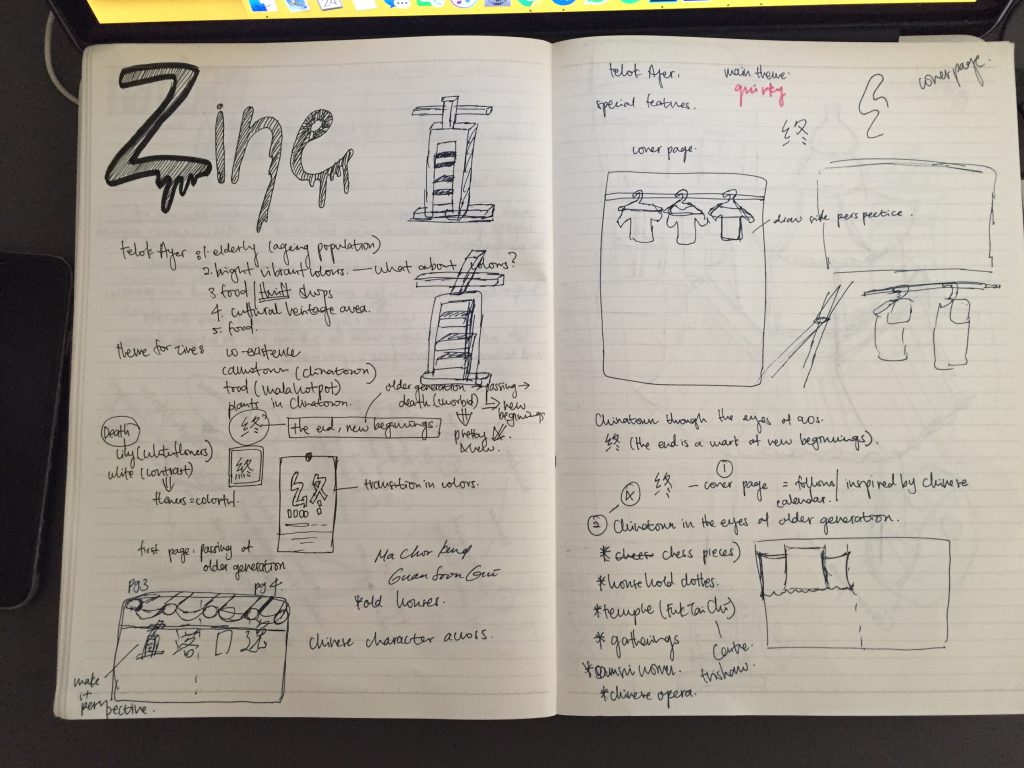
I wanted my zine to encompass more than just what the place have, but the story the place can tell. Hence, moving towards the direction, I decided on the overarching theme of Time, where the end to something is always a start to new beginnings.
The process of this new idea can be seen here.

After my first research around Telok Ayer, I felt that I was still lacking information, hence I went back down a second time to get more pictures for my zine, and did more research on my own. I studied the map of Telok Ayer, and decided to expand my area to Chinatown, since Telok Ayer is a subset of it.

Hence, the second time I went, I decided to explore further up into the OG People’s park area, which I did not cover the other time. In addition, I went online to do a little more research and I found out about this 3 places in Chinatown – Jalan Kukoh, Jalan Minyak, and York Hill. These 3 places are nested in the same area, however, it is commonly overlooked due to its location. It is in between Chinatown and Outram, but no where near both. However, based on the map, these 3 places are counted as Chinatown. Hence, I decided to cover the area too.
 When I went there, I came to realized that the area was heavily populated with elderly and the flats are mostly rental flats, or one-room flats. The picture above was an elderly man that I met while I was there. He is deaf and mute, but he had this positive energy shining through him. He kept smiling, and even though we could not communicate verbally, we managed to do so through body language. Aside from this elderly uncle, I met his neighbours, which reminds me of the kampong spirit that I read very often from my textbook.
When I went there, I came to realized that the area was heavily populated with elderly and the flats are mostly rental flats, or one-room flats. The picture above was an elderly man that I met while I was there. He is deaf and mute, but he had this positive energy shining through him. He kept smiling, and even though we could not communicate verbally, we managed to do so through body language. Aside from this elderly uncle, I met his neighbours, which reminds me of the kampong spirit that I read very often from my textbook.

With the initial idea of using colours, I scrapped it off after a consultation session with Mimi, as she mentioned that it should be more personal rather than editorial. Hence, I decided to go with create social awareness as my overarching theme, since it is something that resonates well with me.
Initial research on colour:



Before editing all the pictures, and deciding on the layout, I started off by grouping them into the various colours that I see around Chinatown. As mentioned, it appeared too editorial, hence I decided scrap it off.